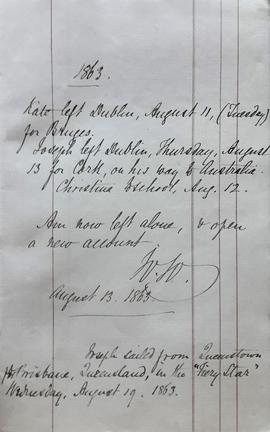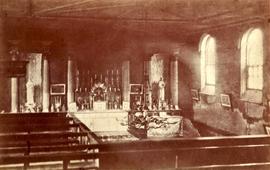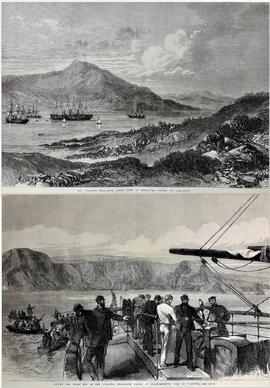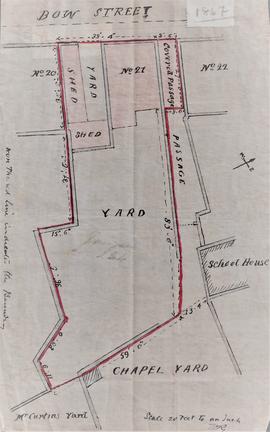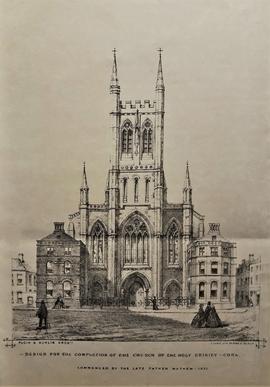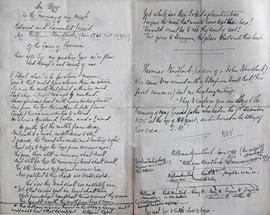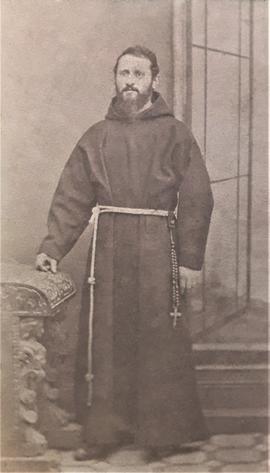Expense Journal of William Woodlock
- IE CA CP/3/7/2
- File
- 1863
Part of Irish Capuchin Archives
Expense journal of William Woodlock, 13 Hardwicke Place, Dublin. A manuscript annotation on the title page gives the date 13 August 1863. A note on the first page by William Woodlock reads ‘1863 / Kate [his sister] left Dublin, August 11, (Tuesday) for Bruges. Joseph [his brother] left Dublin, Thursday, August 13 for Cork, on his way to Australia … Am now left alone, and open a new account. W[illiam] W[oodlock]’. An additional note at the bottom of the opening page reads ‘Joseph sailed from Queenstown for Brisbane, Queensland, in the “Fiery Star”, Wednesday, August 19, 1863’. The remainder of the volume contains entries for routine expenditures including washing, cigars, stamps, and stationary.

